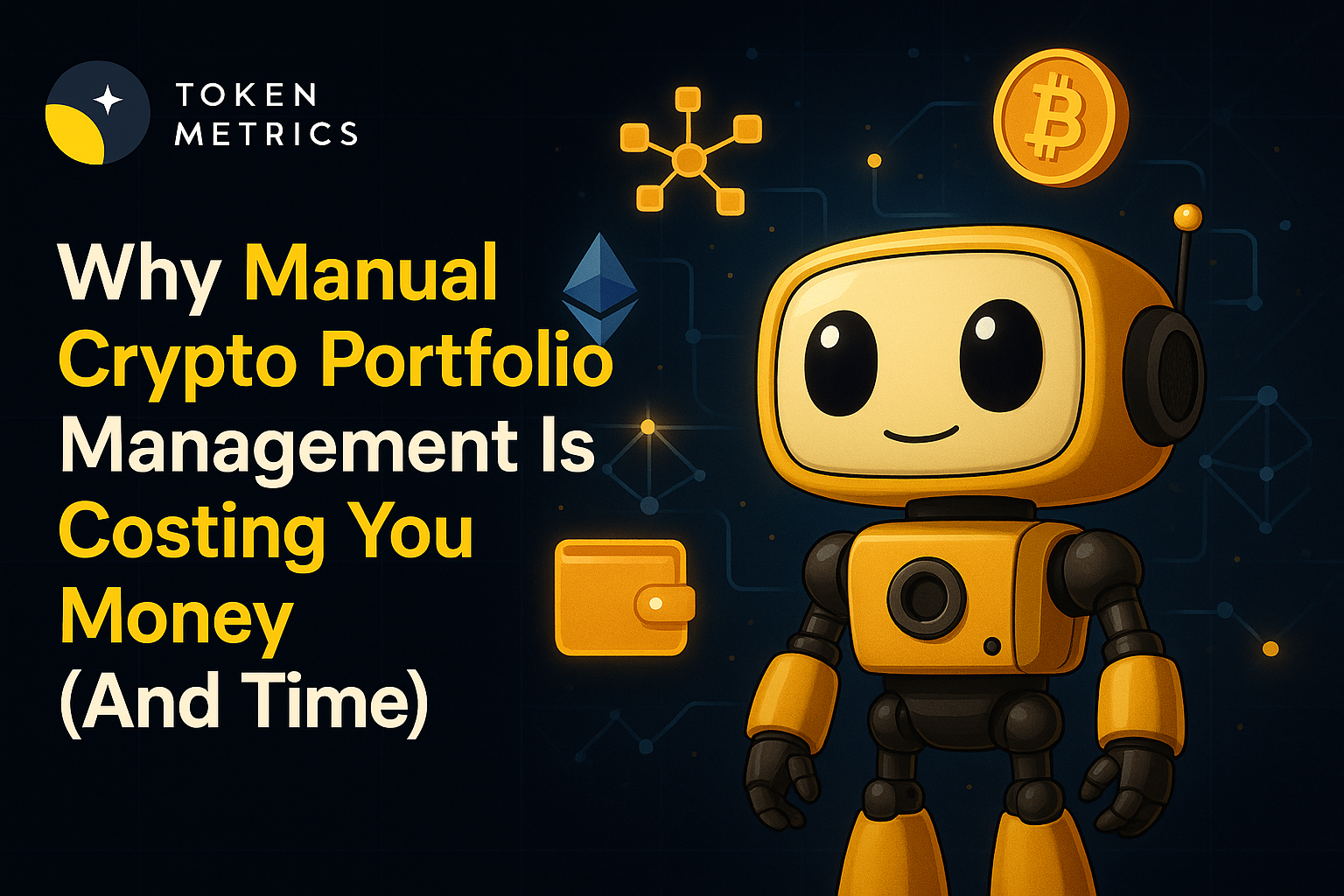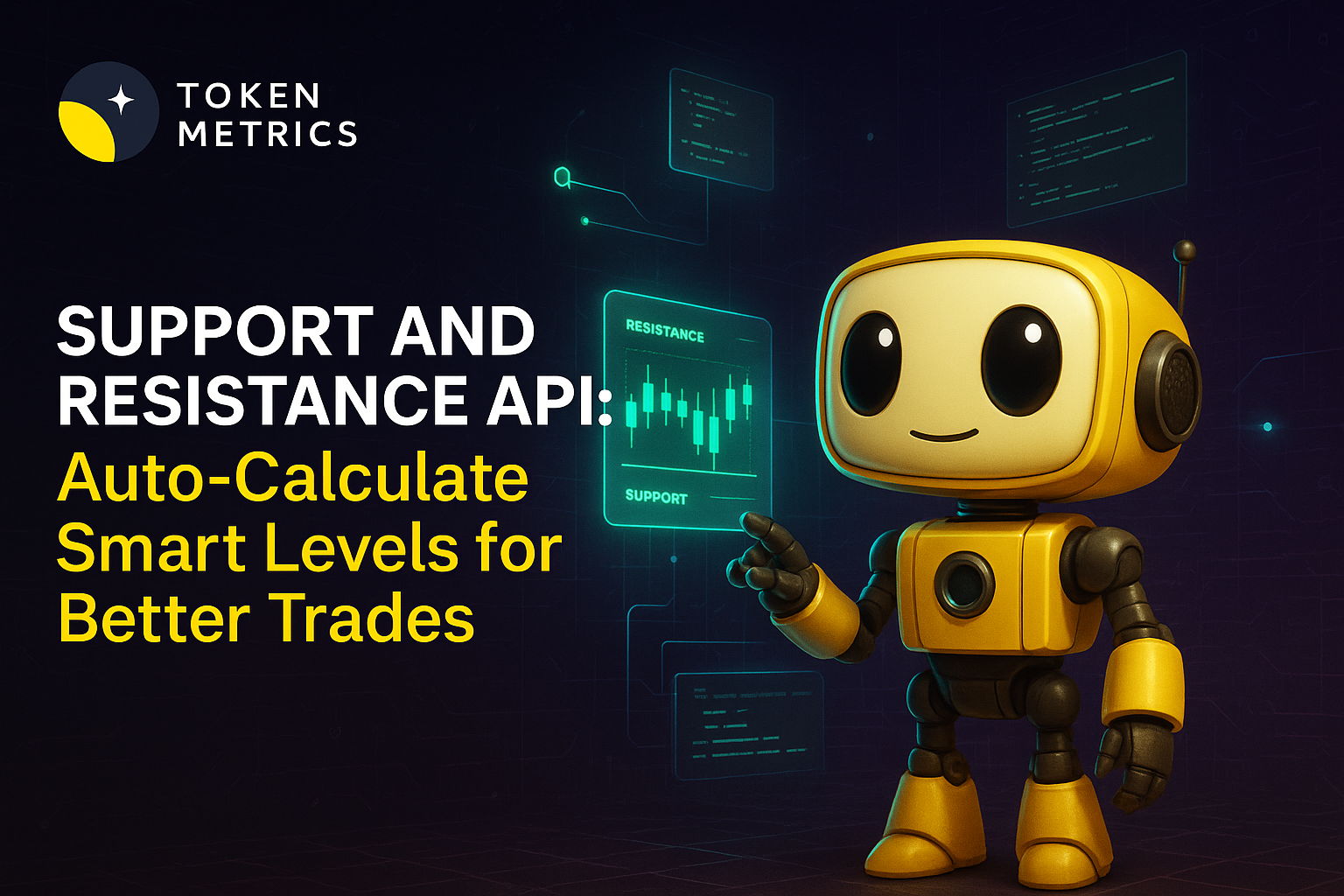How to Find Hidden Crypto Gems with 100x Potential (Step-by-Step Guide) | Token Metrics Moonshots

In the fast-paced world of cryptocurrency, discovering hidden gems—often called moonshots—can lead to life-changing returns. But the real challenge lies in separating hype from actual potential. In this guide, we’ll break down what crypto moonshots are, how they work, and how you can use Token Metrics to reliably find tokens with 100x upside.
What Are Moonshot Tokens?
The term moonshot comes from the idea of a crypto token “going to the moon,” or rapidly increasing in price. These are usually low-cap tokens with a compelling narrative, innovative technology, or early-stage market presence that give them high upside potential.
Key Characteristics of Moonshot Tokens:
- Market Cap Below $50M – Smaller market caps have more room to grow.
- High Risk / High Reward – Volatility is expected, but the upside can be enormous.
- Early Entry – Timing matters. Getting in early before mainstream awareness is key.
- Backed by Fundamentals – Even moonshots need solid technology, use cases, or backing.
How Do Crypto Moonshots Work?
Moonshots rely on the combination of innovation, market timing, and community adoption. They often start unnoticed, then experience exponential growth once crypto traders and influencers catch on.
The Lifecycle of a Typical Moonshot:
- Discovery Phase – A few savvy investors or analysts spot the token.
- Accumulation Phase – Early adopters buy in quietly, keeping prices low.
- Breakout Phase – News spreads, and trading volume spikes.
- Parabolic Run – FOMO (Fear of Missing Out) kicks in, driving price up rapidly.
- Profit-Taking or Collapse – Smart traders exit with gains; latecomers may be left holding the bag.
To avoid the trap of hype-driven tokens, it's essential to use data and analytics, not emotions. That’s where Token Metrics becomes your secret weapon.
How to Use Token Metrics to Find Monshots?
Token Metrics is an AI-powered crypto analytics platform that helps you discover high-potential tokens with real-time data, grades, and backtested indicators. Here’s a step-by-step guide to using Token Metrics to uncover 100x opportunities:

Step 1: Go to the Ratings Page
Start from the main dashboard of the Token Metrics app.
- Navigate to the “Ratings” tab.
- This page ranks thousands of tokens using AI-based Trader Grade and Investor Grade, factoring in technical indicators, on-chain metrics, sentiment, and more.
Pro Tip: Look for tokens with rising Trader Grades and strong historical performance.
Step 2: Click on the “Moonshots” Tab
Once you’re in the Ratings section:
- Click the “Moonshots” tab at the top of the page.
- This will filter the list down to tokens the AI model flags as having moonshot potential—i.e., tokens likely to perform exceptionally well in the short term.
These are automatically generated by Token Metrics AI models using over 80+ data points, including:
- Price momentum
- On-chain activity
- Sentiment analysis
- Volume spikes
- Market structure
Step 3: Review Key Moonshot Metrics
Each Moonshot token is presented with a rich dataset to help you make informed decisions:
- Trader Grade (with % change in past 24h or 7d)
- 24H Trading Volume – Gauge market interest
- Market Cap – Lower caps typically offer more upside
- Date of Entry – See when the token was first flagged
- Live ROI Since Moonshot – Know exactly how past picks performed
Bonus Feature: Toggle to “Past Moonshots” to review previous winners and assess the track record of the platform.
Step 4: Choose a Token to Explore
Click on any token in the Moonshots list to open its Token Details Page.
Here, you can:
- Analyze real-time charts
- Review fundamentals, like project utility, tokenomics, roadmap, and team
- See top holders and whale activity
- Examine price volatility and volume patterns
This is where research and intuition meet. Use the available data to decide if this token fits your risk tolerance and investment thesis.
Step 5: Buy in Seconds
Token Metrics makes the process seamless:
- Just click the “Buy” button on the Moonshots page.
- This opens a swap widget powered by integrated DEX aggregators.
- Choose your wallet, approve the transaction, and you're done—no need to leave the platform.
This integration eliminates the hassle of going to third-party platforms to execute trades, saving time and reducing risk.
Why Use Token Metrics for Finding Moonshots?
Token Metrics isn’t just about flashy picks—it’s about using data science and AI to gain an edge.
Key Benefits:
- AI-Driven Insights – No emotional bias; just pure data analysis.
- Transparency – View past moonshot performance, live ROI, and update dates.
- Speed to Trade – Instant buy options right from the dashboard.
- Performance Tracking – Evaluate your results based on entry/exit signals.
Real Examples: Token Metrics in Action
- Euler Finance was flagged as a Moonshot before its 30% rally—validated by a bullish AI signal.
- Morpho gained traction after appearing in the Moonshots list, later becoming a top TVL gainer.
- Hyperliquid made the list before capturing major perp trading market share.
By combining early AI alerts with your own due diligence, you can position yourself ahead of the crowd.
Final Thoughts
Finding the next 100x crypto gem doesn’t have to be a guessing game. While the crypto space remains volatile, tools like Token Metrics help stack the odds in your favor. From real-time ratings to instant buy options and performance metrics, you have everything you need to make smart, data-driven bets on the future of crypto.
So if you're serious about turning small investments into big wins, start using Token Metrics to uncover moonshots before they go mainstream.
Try Token Metrics today and unlock the power of AI-driven crypto investing.
Create Your Free Token Metrics Account

.png)




%201.svg)
%201.svg)


%201.svg)










.svg)




.png)